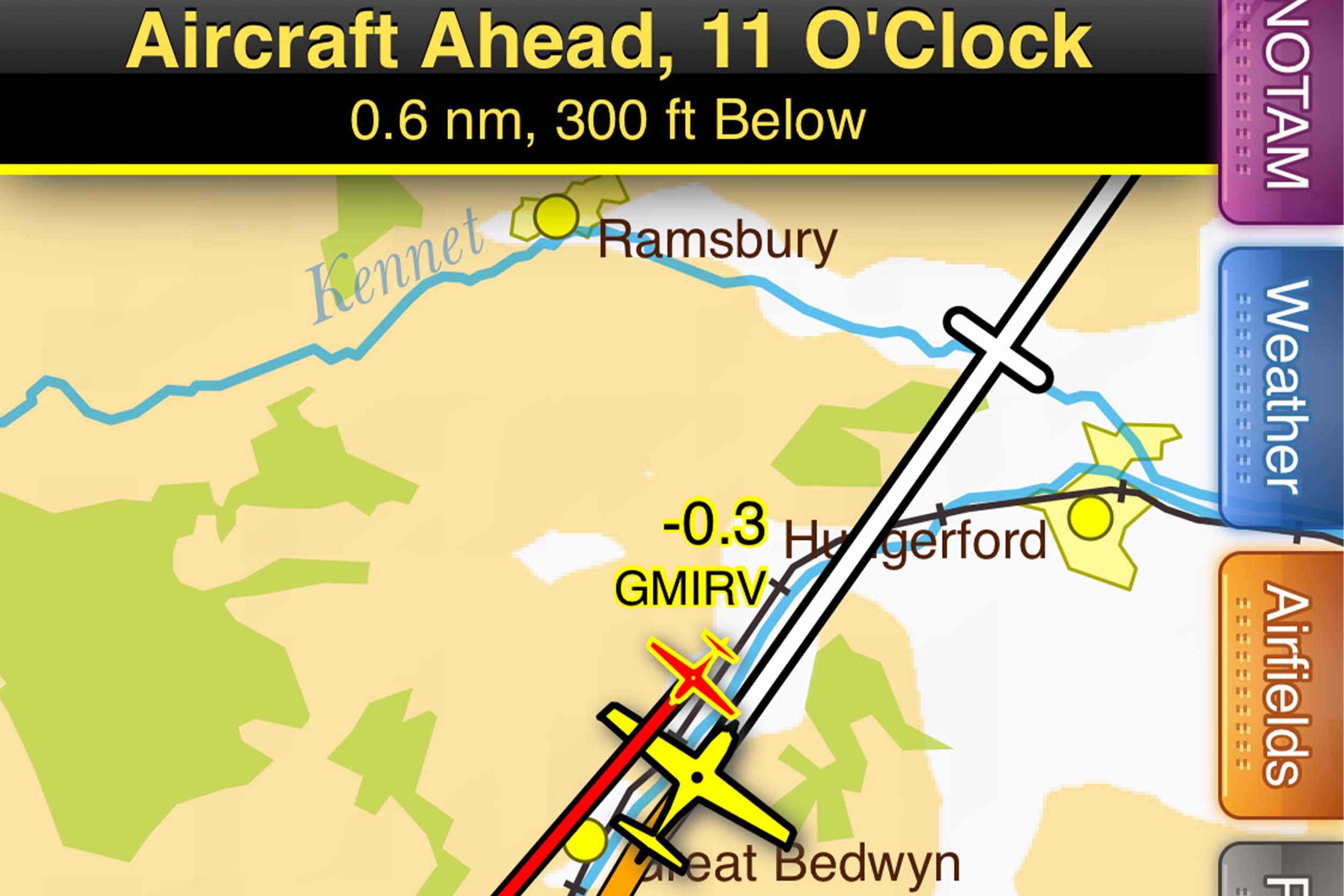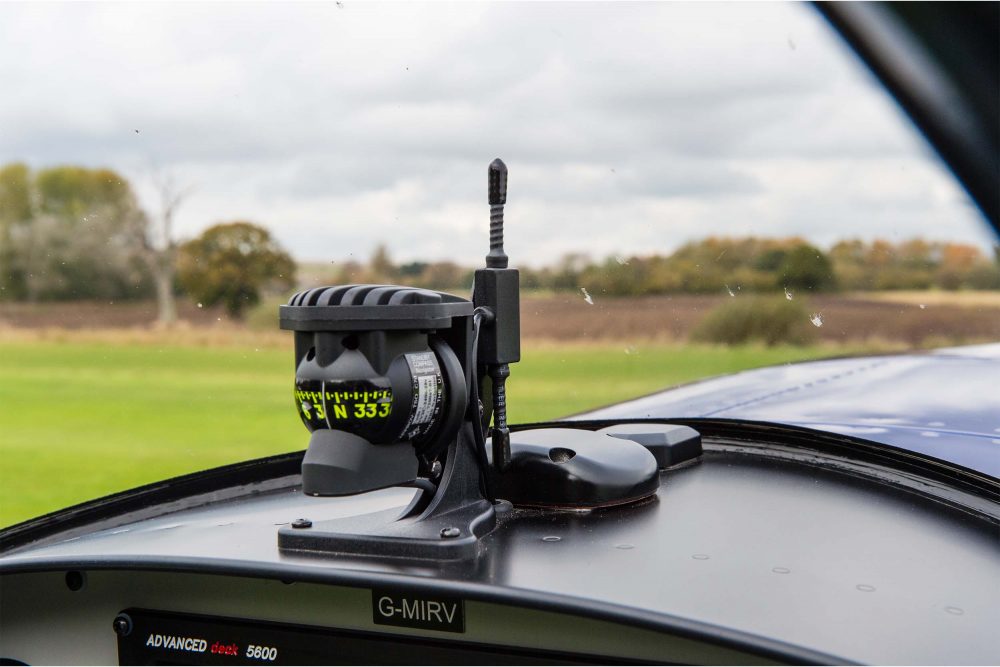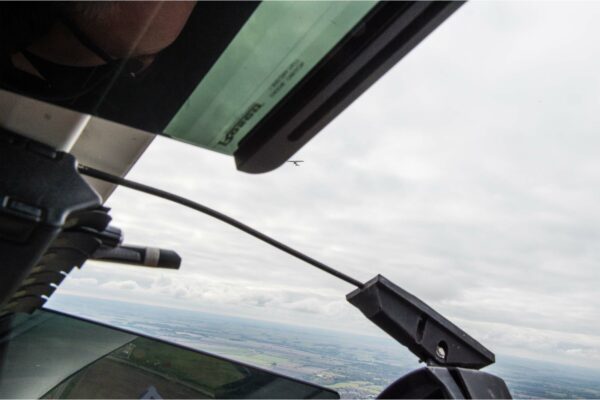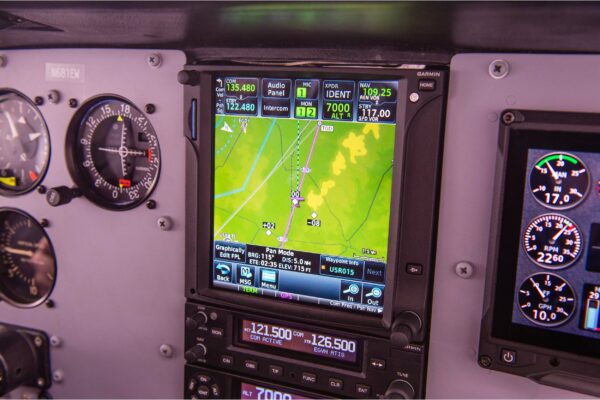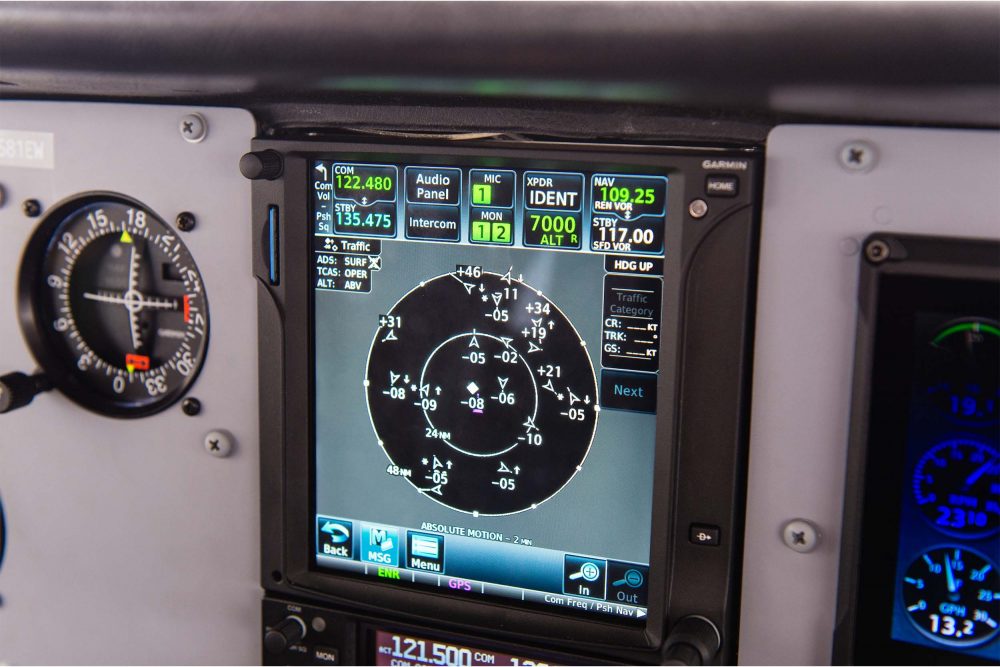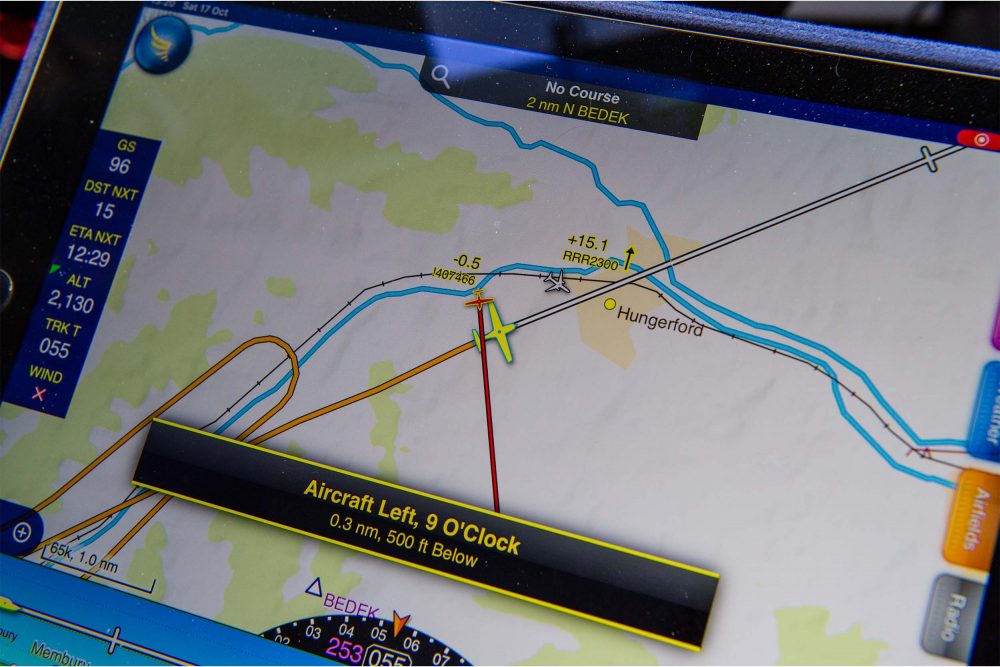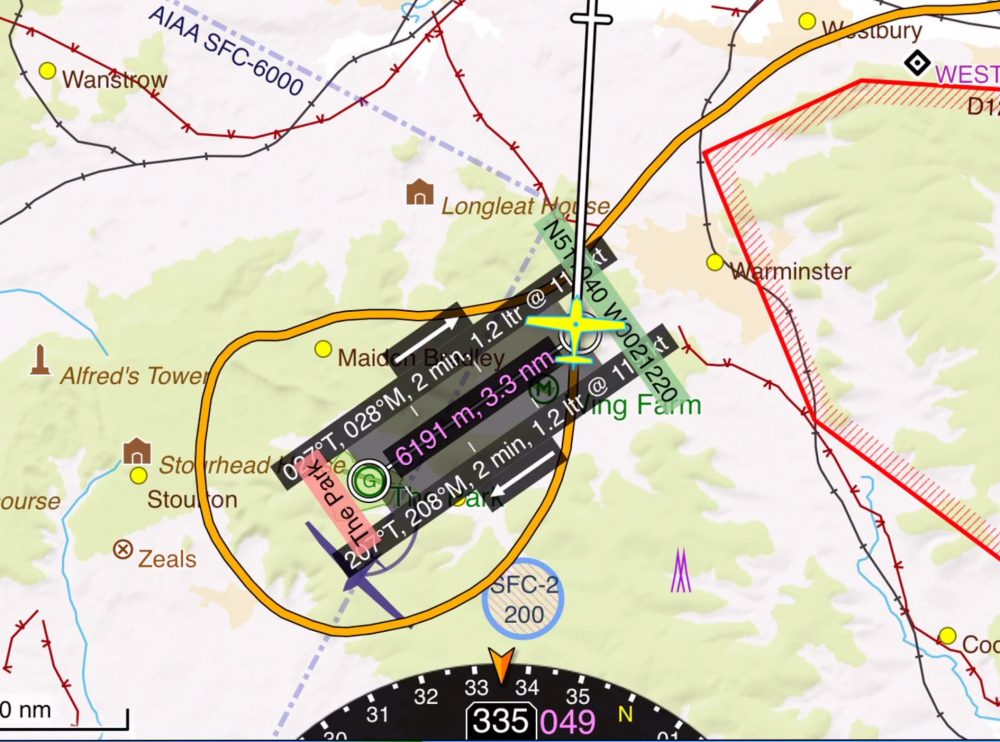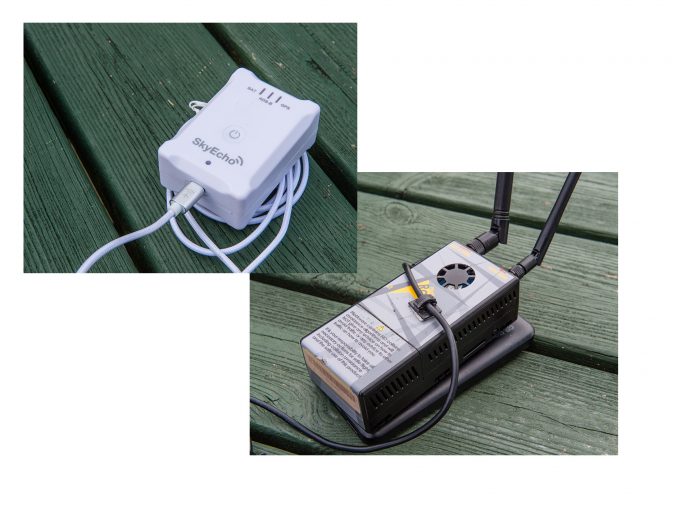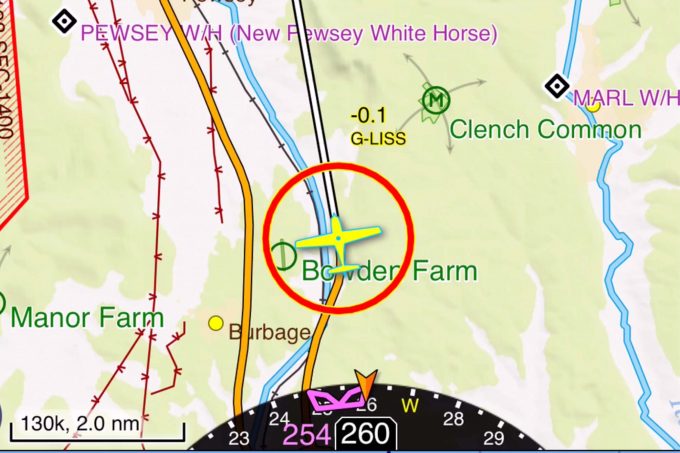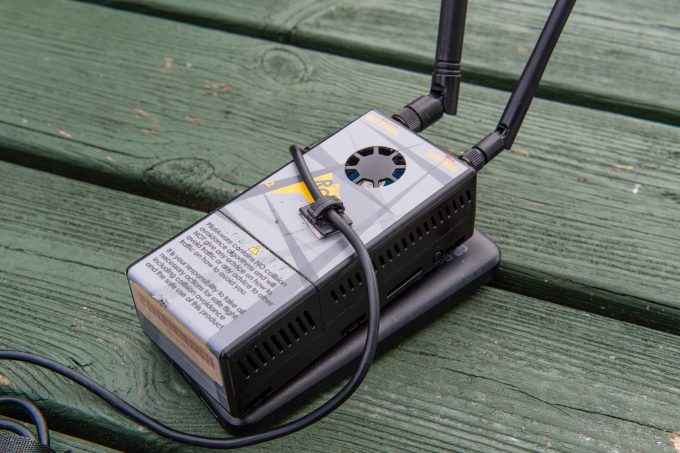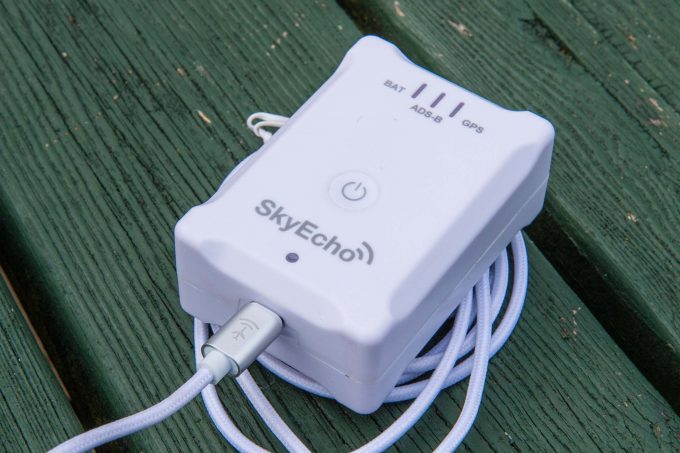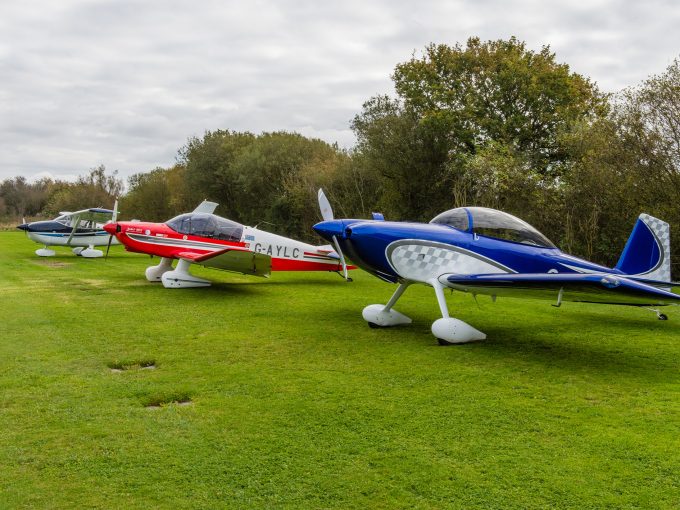Battle of the portables…
The trenches have been dug and occupied, the troops have been shouting at each other with megaphones, and there’s very little chance that a game of footie will break out on Christmas Day, but we’re planning to sidestep the salvos and take a balanced look at both the SkyEcho 2 and Rosetta. Although we cannot ignore it, this is not really about what the boxes emit, or what they receive, but about how they are in use and what they’re like to fly with.
SkyEcho 2
What we like The SE2 feels like a high quality piece of consumer electronics. While you wouldn’t want to throw it at a wall, you would expect it to live a long and happy life in a pilot’s bag. The built in battery charges through a USB-C port, and a full charge will outlast pretty much all pilot bladders and most of their fuel tanks too.
It’s supplied with a RAM mount and a simple quarter turn fitting, and should be mounted vertically for best reception. This makes it very easy to live with if you rent aircraft, or swap between several different ones. There’s a simple on / off button and three lights, battery to show there’s charge, ADS-B to see if it is set to transmit (you can disable this if you are already doing ADS-B) and GPS so that you know it’s found itself.
The SE2’s internal GPS allows the SIL value to be set to 1, and while SDA currently remains at 0, that too should change when the CAA gets around to amending CAP1391 (see: Unavoidable tech talk boxout)
It has two receivers, one for ADS-B on 1090MHz and the other for ADS-B transmissions on 978MHz. The latter is used in the US for uplinked data which can be FIS-B and / or TIS-B (weather or traffic respectively). There have been a few trials in the UK (and one last year in Germany) along with persistent rumours of more to come. Should that happen, and should it ever roll out nationwide, the SE2 will be ready and waiting. Right now, it is possible to go into the units settings and change the second receiver to pick up FLARM transmissions. You’ll have to pay another £30 to your nav app provider, but the unit will then be able to see FLARM traffic in addition to ADS-B traffic.
What we don’t like We mentioned very early on that the placement of antenna is critical, this is particularly true if you are considering a fixed installation where you can take some time and care to place them to best advantage. Sadly, the SE2 has no external sockets, so the antenna are going to be wherever you mount the unit. Right now, the choice to receive FLARM transmissions is simple, that other receiver is doing nothing anyway, and it’s definitely worth £30 a year to spot all of those cross-country gliders. However, when and if (we can dream can’t we?), TIS-B or FIS-B or both become available in the UK we’ll have to choose between them and FLARM.
PilotAware Rosetta
What we like Wow. Talk about innovation and ingenuity. What started as a self-build (and originally even solder) kit has been transformed into a box that arrives almost ready to fly. The small team of developers and volunteers constantly develop the product with features added regularly. The aerials have external mounts, so if you’re working on a fixed install you can run cables and put the aerials in the best place possible, and that should increase the range at which you see traffic, or the range at which you can pick up ground stations. Rosetta puts out a P3i transmission that will be picked up by other Rosetta users. There’s an annual subscription of £14.40, which we think is a low cost for upgrades and improvements.
What we don’t like The build and feel is not fantastic and I doubt that it would have a very long life if treated in the same way as the other electronics in most pilots’ flight bags. This is accentuated by the aerial mounts, and if the antenna are left on, it makes the connections even easier to damage. My first classic unit met its end when the aerial mount snapped off.
The literature is very clear in saying that the battery / power supply is critical for trouble-free use, so it’s a shame that there’s no internal battery, and that you have to buy an external battery and the lead to plug it in. This doesn’t make portable use any neater.
Adding power to Rosetta turns it on, and removing it turns it off, there’s no switch which seems a bit strange. Equally, there’s no light to indicate that it’s being powered. We tell a lie, there are a couple of lights, but that are inside Rosetta’s case, and you have to peak through the cooling slats on the side to see of they’re on. Some people are emitting P3i as their EC transmission. They can only be seen by other Rosetta/PilotAware users.
What we think that BOTH units need to improve SkyEcho has an app in both Apple’s App Store and Google Play. PilotAware has an app in Apple’s App Store. With SkyEcho you can easily change several parameters, and with Pilot Aware you can easily update the firmware. Both of these things are good.
What’s not so good is that to do certain things for either unit you have to join its WiFi network and log in to it via a browser by entering its IP address. No. No. No. I might be able to do it, you might be able to do it, but the widespread voluntary adaptation of EC needs to be geek-free and friendly from the user’s point of view.


